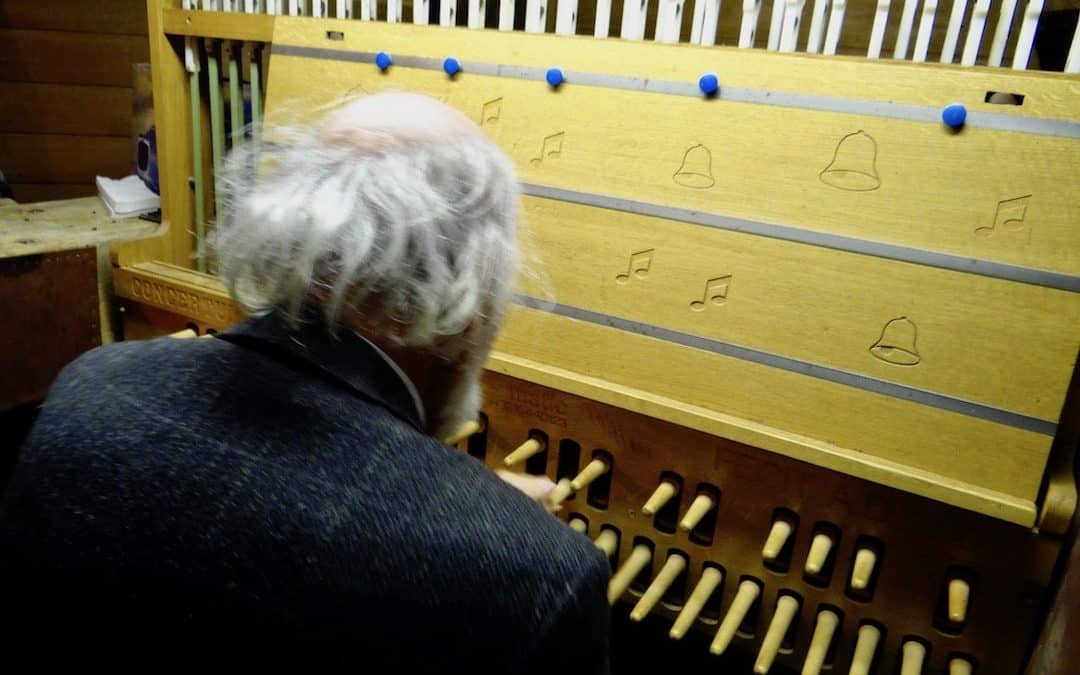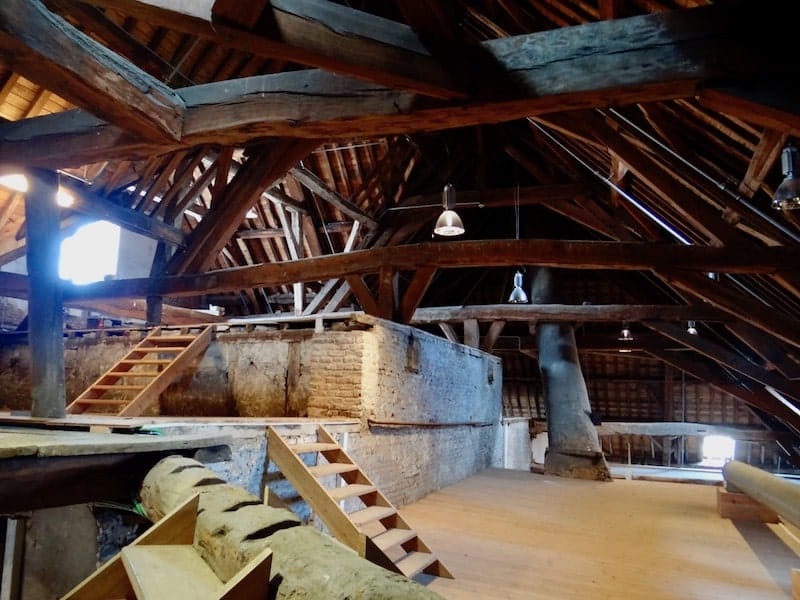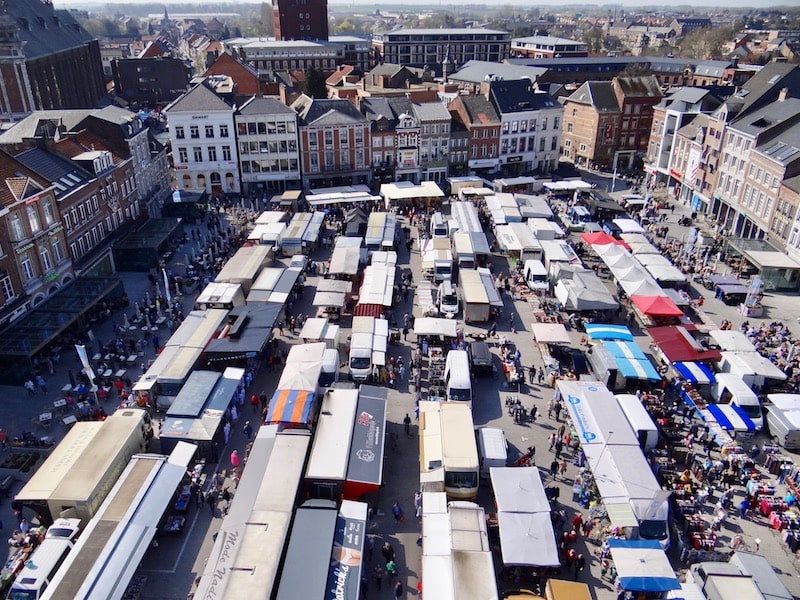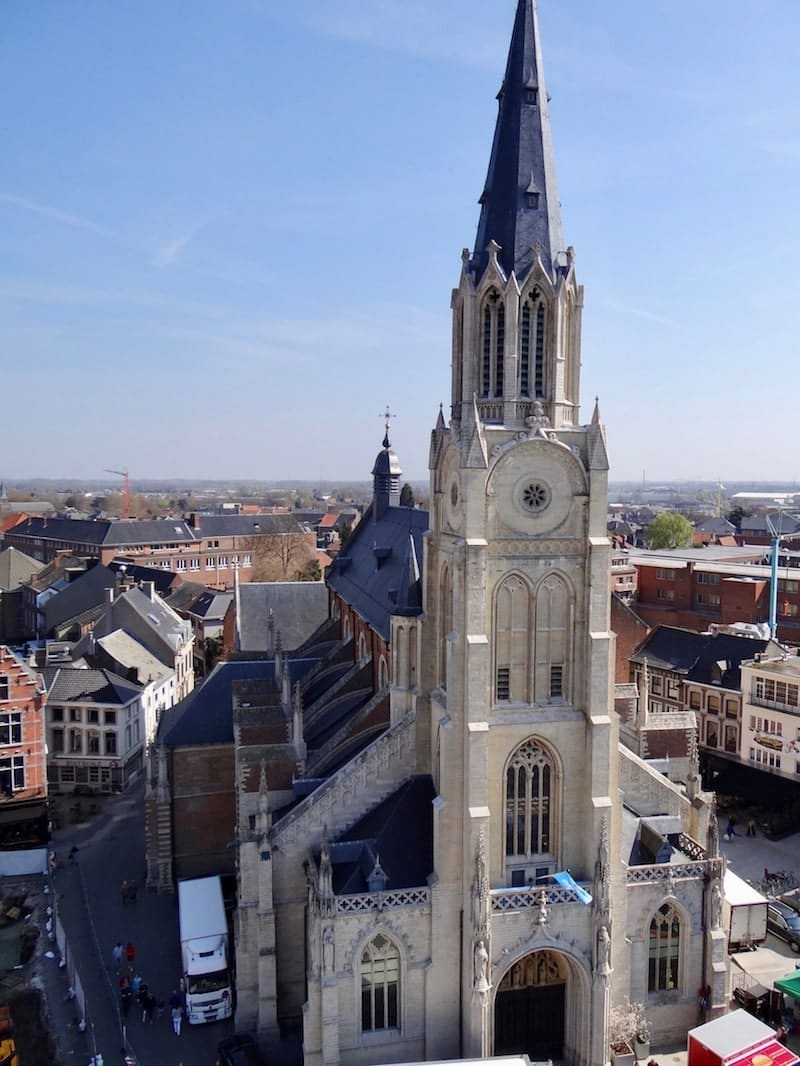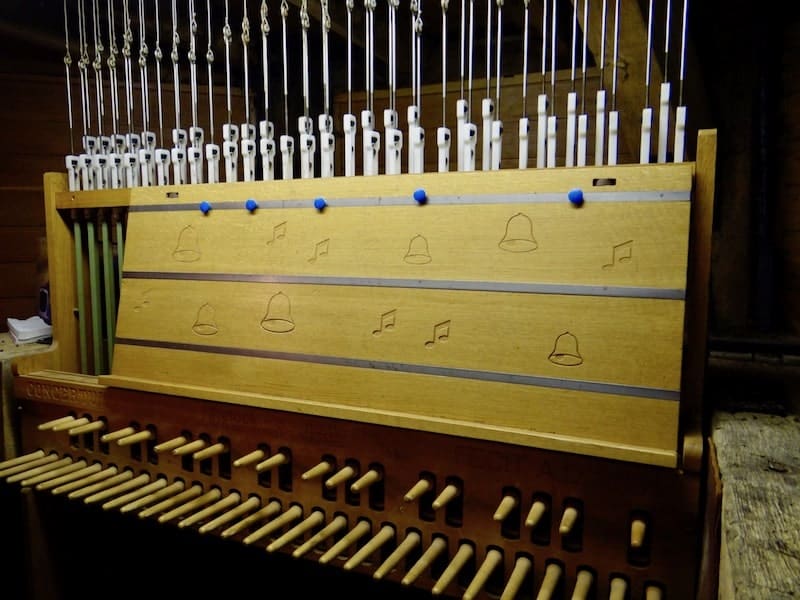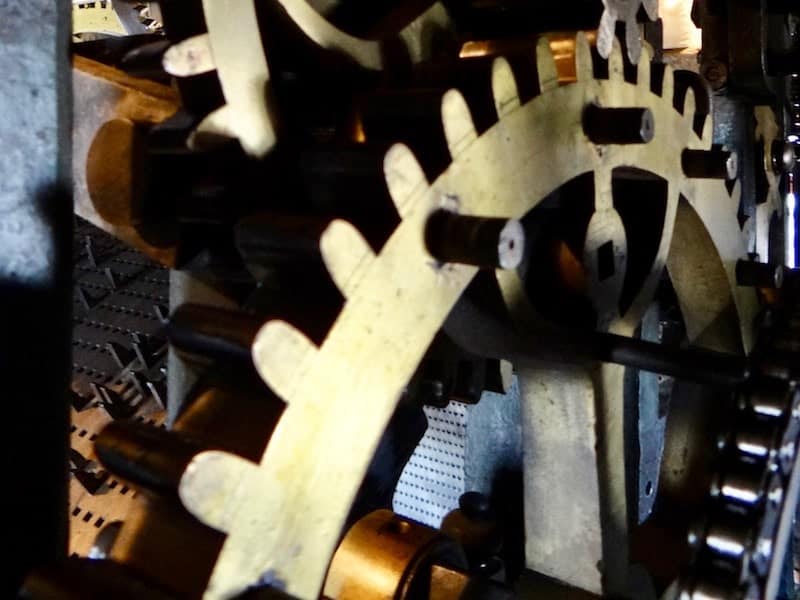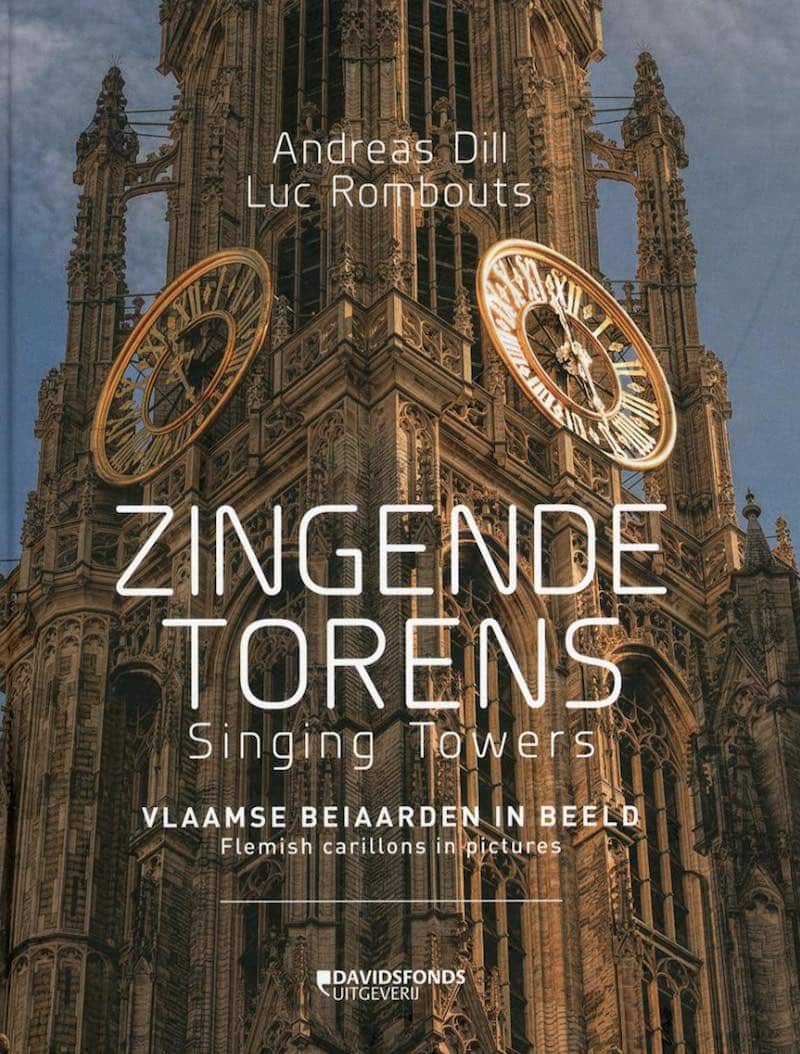A fine adventure gets off to a good start
The idea of visiting and climbing all the belfries on the UNESCO World Heritage List was born years ago. Although it is not exactly clear what year this originated, it was at least during an edition of the Ghent festivities. Then it took until the end of 2018 for a first finger exercise. This by visiting the belfries of Sluis, Bruges, Ghent and Eeklo. Hence, instinctively, we are only now really getting started. With both Tourism Sint-Truiden and that of Tongeren, we notified our arrival and the purpose of the visit.
Not open to the public
We were told from both places that the belfries are not open to the public. In the case of Sint-Truiden, we are told that the belfry tower is not safely accessible to the general public. However, in an extraordinarily cordial e-mail, we were promised that we would be allowed to go up to the attic to the tower entrance under supervision. From Tongeren, we are told that an ascent is not possible until 2020.
Meeting with Noël Reynders in the attic of City Hall
Despite the bad news beforehand, we set out and an unexpected pleasure befell us in Sint-Truiden. When we reach the attic and can see how the City Hall is built around the old cloth hall, the door to the tower opens. A spry man with a briefcase emerges from this. It turns out to be Noël Reynders, the former city carillonneur of Sint-Truiden. After greeting us warmly, he asks if we might like to go into the tower. This, of course, is not on deaf ears.
Up the tower
Why the tower has limited access becomes clear immediately behind the first door. This door was made when an elevator was installed lower in the tower. This eliminated the old door. Immediately behind the new door, the tower must be crossed in width, through a plate of glass through which you look down meters deep. Then, via several wooden ladders and one separate aluminum ladder, it goes higher and higher into the tower until it reaches a hatch under the carillon bells themselves. In the space below, there are windows in all directions, allowing the surroundings of tower to be photographed beautifully.
Noël Reynders city carillonneur from 1967 to 2010
After the excitement of this ascent, we return to the room where the keyboard is located. Noel takes a seat in front of it and tells his story. Although he went to the Lemmens Institute in Mechelen in the 1960s to learn to play the organ, things turned out differently than expected. Already during the entrance exam, he was told that there was also a carillon in Sint-Truiden. So it was advisable that he should therefore master the art of playing it. As a result, he was already playing the carillon of Sint-Truiden occasionally during his studies.
An opportunity for a young carillonneur
When city carillonneur Edward Loos died suddenly, he quickly obtained his diploma and was appointed city carillonneur at a relatively young age in 1967. It didn’t just stop at the carillon of Sint-Truiden, however. When we tell him that we are from Bussum he tells us that he also played there. He then plays the national anthem especially for his Dutch guests. We feel very honored.
The number of bells of Saint Truiden
While preparing for the visit to St. Truiden, we came across some varying information on the Internet about the number of bells in the carillon. Where one source spoke of 41 bells another spoke again of 50 bells. Noël Reynders explains. ‘Even before the rebuilding of the belfry in 1606, bells hung in the tower. After the old tower collapsed on March 27, 1606, these bells were on the other side of the Great Market.
The creation of the present carillon
The basis for the current carillon dates back to 1754 when the first 22 bells were cast by Andreas Josephus van den Gheyn of Leuven. Until its restoration and expansion in 2001, the carillon eventually consisted of 41 bells. In the same manner as the first bells from 1754, nine new bells were cast and added to the carillon in 2001. Special to note is that a the restoration in 1996 revealed that from its construction in 1754, two operating cables had been crossed. This had to be taken into account when the playing drum was cut after restoration’.
Safe through the wars
Most carillons came through the wars well. Many bells were requisitioned for the war industry but most of the carillons were spared and used for propaganda. The playing drums were then once again bombarded with German-inspired songs. The great play scroll in Sint-Truiden, created by brothers Gilles and Nicolas de Beefe in 1754, is bestrewn with the Song of Joy. Those who know the text understand that this alone was a reason for the occupiers to want to change the melody of the carillon.
An act of resistance in the tower
At the time this was to take place, the then carillonneur reported that the key needed for this had been “lost” for some time. This key is a lath that contains indications that relate the bells to the rows on the play roll. Without this key, recutting is virtually impossible. All the occupying forces could do then was to lock the automatic carillon with a thick chain. In honor of this act of resistance, the song still stands to this day.
Passed the baton in 2010
Noël Reynders had to retire in 2010 very much against his will. A plaster on the wound was that in both places where he gave weekly concerts he was allowed to pass the baton to his sons Henry and Frederick Reynders. Frederik is the current city carillonneur of Sint-Truiden and Hendrik in Zoutleeuw. With great regularity, Noël fills in for them. So too today. As we leave the tower, he asks us to notify Tourism Zoutleeuw to contact him briefly when we visit the Belfry of Zoutleeuw. We can’t believe our luck.
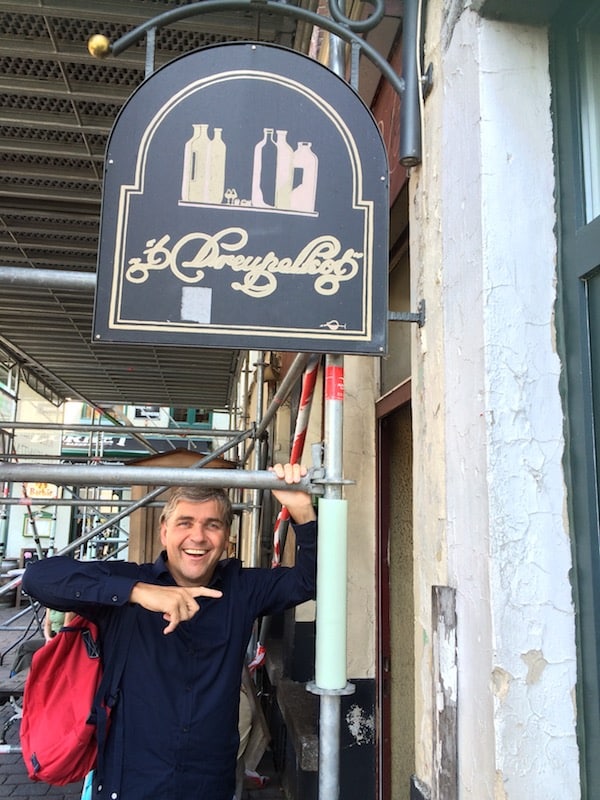
Eric Cornelissen
Wanneer het was is niet meer bekend maar tijdens een editie van de Gentse Feesten ontstond de interesse in de geschiedenis en de betekenis van Belforts. Met een vette knipoog naar Reinhold Messner die als eerste de veertien hoogste toppen van de wereld beklom moest iemand maar eens de eerste zijn die alle belforten van de Lage Landen gaat beklimmen! Pas later werd duidelijk dat het er geen 14 maar 56 zijn. Die Messner had het maar makkelijk.
